Anime movies were reinvented forever when Akira's neon-drenched Neo-Tokyo blasted across screens in 1988. The film's hand-drawn cel animation acquired unparalleled levels of detail, featuring 327 different colors and fluid character motions that redefined what animated cinema could execute. Beyond Akira's cyberpunk mutiny lies a treasure trove of other visually stunning films that display equally astonishing artistry.
These ten anime movies exemplify the medium's expansion that defies artistic limitations.
1. The Gothic Dark Symphony: Vampire Hunter D: Bloodlust
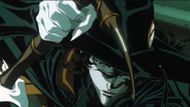
This is a visually dense dark‑fantasy anime movie with gothic, detailed character designs by Yoshitaka Amano and fluid Madhouse animation that bring a surreal post‑apocalyptic world to life. The tale of a half‑vampire bounty hunter racing opponent hunters to save a kidnapped girl develops in sweeping, dreamlike aesthetics with elegant gothic backdrops and crisp action visuals.
The film's painstaking attention to detail epitomizes a nostalgic dungeon arcade game atmosphere. The hand-drawn extreme detail and breathtaking animation showcase stylish, unique artistry where even monsters receive equal artistic care.
2. The Cybernetic Urban Labyrinth: Ghost in the Shell
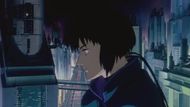
A standout in cyberpunk anime, this film delivers rich, immersive visuals: glowing neon skylines, wet alleyways, and shimmering puddles, all set within a futuristic world layered with philosophical themes. It set the bar for sci‑fi anime visuals and influenced countless works with its lean design and immersive frame‑by‑frame detail.
It uses the gritty and realist aesthetic that the cyberpunk genre has embraced for decades. The visuals were created through a combination of traditional cel animation techniques.
3. The Sky Kingdom's Mechanical Wonder: Castle in the Sky

Among Studio Ghibli's steampunk movies, this one exemplifies breathtaking aerial cinematography and elaborate mechanical layouts that rival any trendy animation. The lofty visuals and whimsical panorama form an aesthetic that is dreamy, heroic, and unforgettable.
Laputa’s floating castle blends intricate Victorian-style machinery with vibrant natural landscapes, creating a world both mechanical and alive. The film's environmental storytelling through visual details makes every background element contribute to the narrative's magical realism.
4. The High-Octane Racing Spectacle: Redline
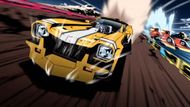
After seven years of meticulous work, this anime stands as a high point of hand-drawn animation, known for its chaotic art style and vivid, dreamlike colors. The film's kinetic power bursts through every frame, featuring impossibly thorough racing machines, alien landscapes, and character designs.
The minimalist plot lets the art design and fluid motion shine, initiating a frenetic fever dream of speed and style. The rich neon aesthetics, fused with fluid motion blur techniques, develop a sensory overload of adrenaline rush.
5. The Mechanical Castle's Moving Poetry: Howl's Moving Castle
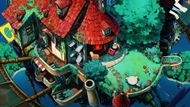
Another Ghibli anime movie crammed with whimsical castle mechanics, rich color palettes, and exquisite landscapes that shift between war‑scarred towns and wistful skies. The castle itself becomes a character via its complex design featuring pipes, gears, mechanical legs, and mystical elements that seamlessly combine technology with fantasy.
Sophie's changeover sequences illustrate how character design can reflect internal emotional states through outer visual changes. Its lush and painterly backgrounds arouse an effective sense of visual wonder.
6. The Emotional Kaleidoscope Anime: Colorful

One of the anime movies that delivers a unique visual course for exploring human psychology via spirited, ever-changing animation tones that reflect passionate states. The film's artistic technique shifts between realistic backgrounds and abstract, expressionistic sequences.
The clever use of visual symbolism drives every frame, enhancing the narrative's philosophical depth. Its visual aesthetic balances realism with painterly color tones.
7. The Art Deco Dystopia: Metropolis
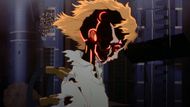
This is one of the sleek Art Deco anime movies that features sparkling futuristic cityscapes, towering spires, and richly meticulous robot designs in a retro-futuristic aesthetic. Based on Osamu Tezuka's manga, this film pays homage to Fritz Lang's classic silent film.
The characters’ liveliness melds Tezuka's classic tone with modern computer-generated backgrounds. The film's visual majesty showcases decorated set pieces featuring massive robots, underground cities, and spectacular devastation sequences that rival any modern blockbuster.
8. The Natural World's Ancient Spirit: Princess Mononoke
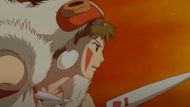
Miyazaki's environmental epic offers some of the most elaborate natural environments ever animated. The film's creature design showcases immense forest spirits, wolf gods, and boar deities, infused with an unbelievable concentration on anatomical detail and fluid movement.
The film’s aesthetic is raw, organic, and hauntingly beautiful. The battle sequences between nature and industry depict visually fetching disparities between organic arcs and mechanical lines.
9. The Urban Playground's Monochrome Poetry: Tekkonkinkreet
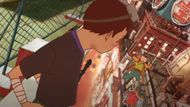
With a striking visual style accentuated by selective bursts of color, this anime transforms the cityscape into a dynamic, almost sentient presence. This gritty film world throbs with raw city energy, stylized character designs, and dynamic hooks that feel like an urban dreamscape.
Its proactive aesthetic and surreal cityscapes make it a standout visual experience. It constructs a visual experience that feels both nostalgic and futuristic, just like Akira.
10. The Dream Logic Spectacular: Paprika
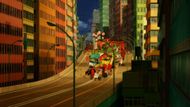
Satoshi Kon's final masterpiece builds a visual symphony of dreams and reality via constantly shifting animation styles and surreal imagery. Its kaleidoscopic visuals and dream-logic aesthetics present a rich sensory feast.
The parade sequence alone depicts hundreds of unique character designs, cultural signs, and visual metaphors crammed into a single breathtaking montage. The seamless shifts between dream and reality indicate how animation can visualize conceptual ideas via pure visual storytelling.
Every frame in these anime masterpieces pounds with the same artistic DNA that made Akira legendary. Exploring these cinematic worlds proves that Akira’s influence stretches well beyond its cyberpunk visuals. These animated gems show the graphical innovation that made Otomo's imagination an endless benchmark for greatness.
